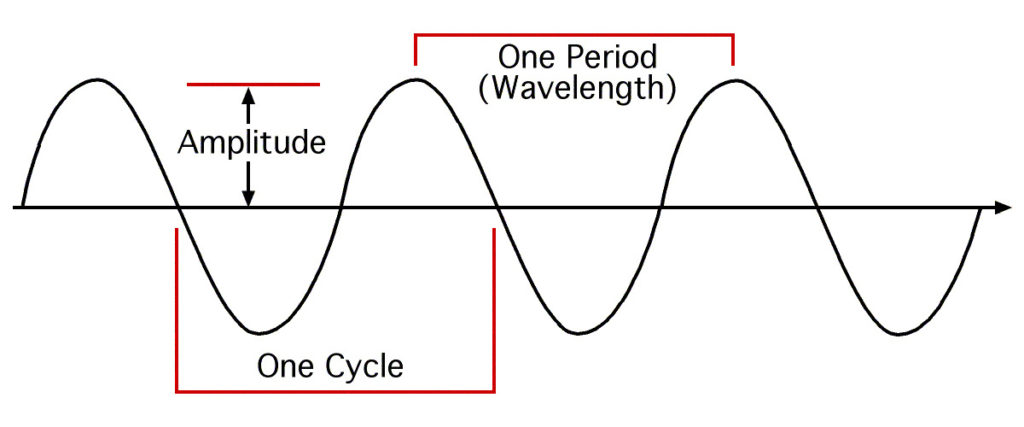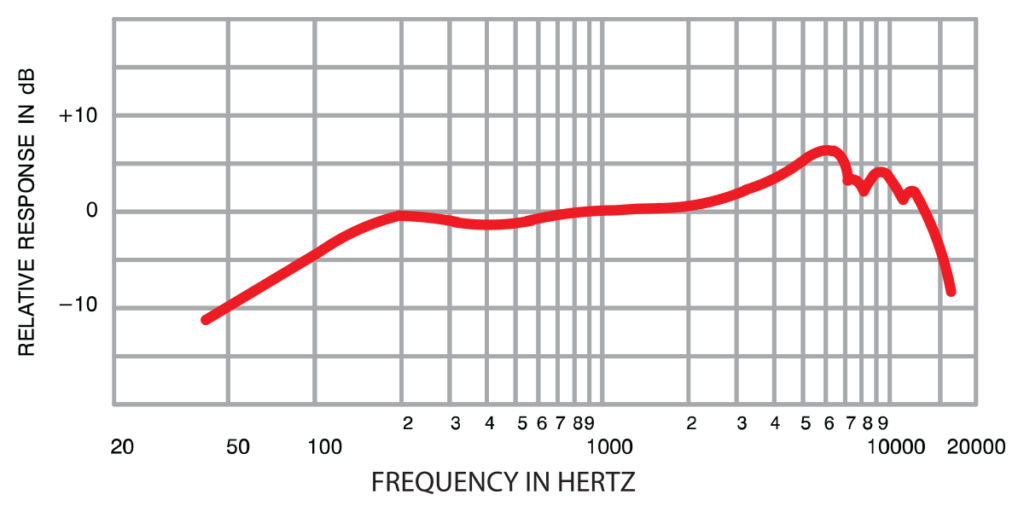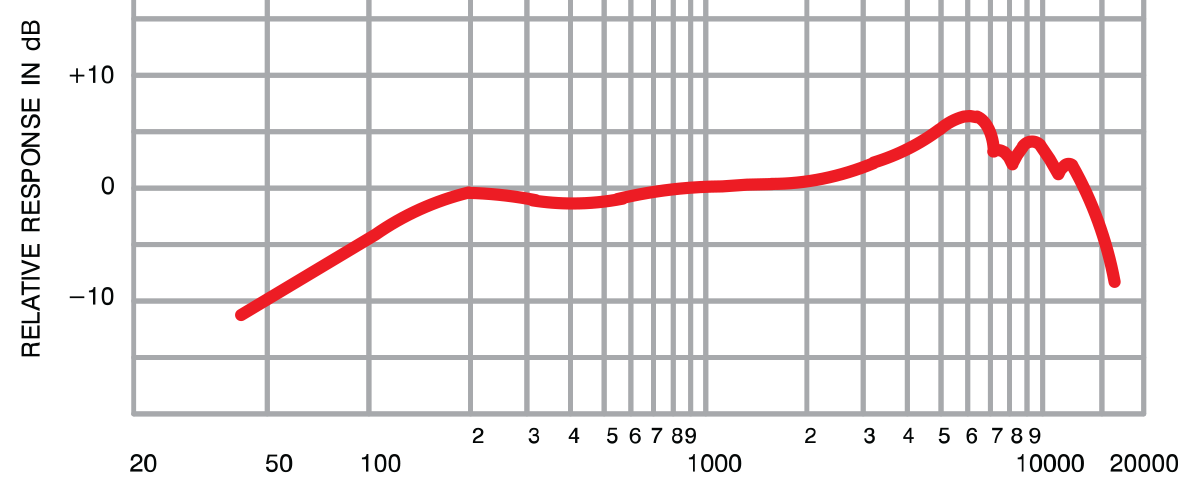Today, let’s turn to audio production – specifically microphones. We use them often. In fact they have become as ubiquitous as cameras – they just tend to be less obvious to us until we record something and don’t capture what we thought we did.
There are several different types of microphones, based on a variety of factors. Sensitivity to sound frequencies, sensitivity patterns and technology type all play into decisions on what type of mic to use. With today’s phone and video camera mics, we often capture what we want without thinking about it… until we don’t. This entry is for those of you who want to capture better sound than what you get with your phone.
As just mentioned, sensitivity to sound frequencies is one primary perspective for deciding which mic to choose for a recording situation. This is called Frequency Response. Before we dive into frequency response itself, let’s cover some audio basics…
Sound is created by vibrations passing through a medium. When a bee buzzes it’s wings, it generates air pressure vibrations that pass through a medium (air) and cause our built-in mics (ears) to vibrate and interpret the vibrations as sound. This is simplistic, but will serve to understand how sound works. When measured, we find that audio vibrations occur at different rates. When diagrammed, audio looks like a cross-section of waves in water – hills and valleys.
 This is an example of a sine wave, the simplest form of sound. Most sounds we hear are much more complex – this allows us to understand the basics. Amplitude is sensed as volume or loudness. Frequencies are defined by wavelength. However you look at it, one period or one cycle defines the frequency of a wave – how fast it repeats. Sound frequencies range from very slow (one cycle per second) to very fast (50,000+ cycles per second. That said, microphones are designed to capture sound in roughly the same range as human ears can hear – 20 Hz to 20,000 Hz. Hertz (Hz) is the designation for cycles per second.
This is an example of a sine wave, the simplest form of sound. Most sounds we hear are much more complex – this allows us to understand the basics. Amplitude is sensed as volume or loudness. Frequencies are defined by wavelength. However you look at it, one period or one cycle defines the frequency of a wave – how fast it repeats. Sound frequencies range from very slow (one cycle per second) to very fast (50,000+ cycles per second. That said, microphones are designed to capture sound in roughly the same range as human ears can hear – 20 Hz to 20,000 Hz. Hertz (Hz) is the designation for cycles per second.
The waves that we call low or bass frequencies tend to fall in the 20 Hz – 500 Hz range. Midrange frequencies cover 500 Hz – 3000 Hz, and high frequencies run from 3000 Hz to 20,000 Hz. These are approximate ranges. Hopefully you understand the principle: the blap of a tuba contains low frequencies and the shrill tweet of a piccolo is primarily high frequency. Enough frequency theory – let’s see how this applies to microphones.
Oh yeah… frequency response. Perhaps the term makes more sense now? We define a microphone by how it responds to frequencies. Because mics are physical devices that use a variety of methods to capture sound, they tend to respond differently from each other. The ideal microphone has a perfectly flat frequency response, meaning that it captures all frequencies equally. The diagram of a flat mic will look like a flat line on a graph. However, no mic is perfect, and many do not respond well to some frequencies. Here is the frequency response pattern for one of the most common mics around – a Shure SM57.
 Note that is is anything but flat. In fact, it is not very sensitive in low nor high frequencies. And it shows an obvious bump up between 3000 and 10000 Hz. This may seem to be a bad mic, yet did I just mention it’s one of the most popular mics around? There is an advantage to the fact that each mic has a different frequency response. By doing so, they are effectively filtering the sound being captured and applying their own qualities and characteristics to the recorded sounds.
Note that is is anything but flat. In fact, it is not very sensitive in low nor high frequencies. And it shows an obvious bump up between 3000 and 10000 Hz. This may seem to be a bad mic, yet did I just mention it’s one of the most popular mics around? There is an advantage to the fact that each mic has a different frequency response. By doing so, they are effectively filtering the sound being captured and applying their own qualities and characteristics to the recorded sounds.
This is definitely the case with this microphone. This pattern shows fairly flat response in the mid-range, which is the range that the human voice and electric guitars use. Any very high or low frequencies generated while recording these sources are filtered out – in the case of voice or guitar, this is generally preferred. Also, the boost in the high mids is the frequency range that our ears interpret as presence, a feeling of closeness to the source. A SM57 pointed into a guitar amp speaker captures it’s powerful mid range and brightens it’s presence while filtering out the extra high frequency noise that’s usually present in guitar amplifiers. Singers prefer a SM58 for the same reasons – the SM58 is the same mic with a round pop filter to protect it. We’ll cover other reasons this is such a popular mic design in future posts…
Microphone selection comes down to purpose. What are you recording and what do you plan to do with the raw sound? The filtering created by mic design causes each mic to have it’s own unique quality. It’s also a different quality than the effect of filters that can be applied beyond the microphone.
There are microphones with much flatter response patterns. They tend to be preferred for general recording such as soundscapes in a particular environment or a full music mix. In fact, as stereo (2-channel) recording became more common, recordists began to demand matched pairs, pairs of mics that have been tested and matched to have almost identical response patterns, as there are even slight variations between the same mics built on the same assembly line.
There are many mics with emphasized frequencies in different ranges and amounts. Recording engineers commonly try different mics on the same source to find out which one captures the preferred frequencies produced by that source. That’s more exacting than most of us need to get.
However, it is good to know some basics for your next audio recording adventure. Now that we’ve covered frequency response, tomorrow I’ll introduce you to polar patterns. No parka required!

